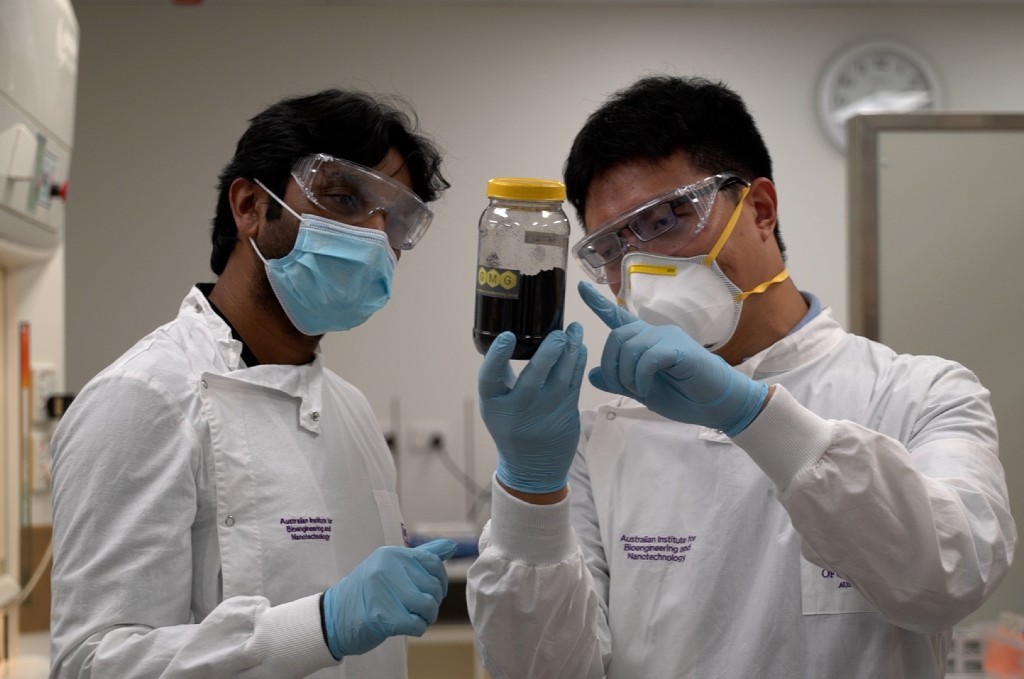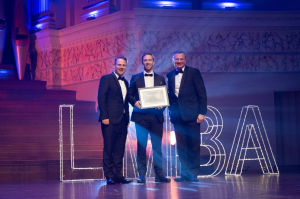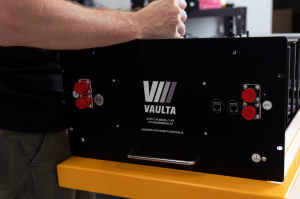From tiny button cells to grid-scale storage systems the size of football fields, batteries are set to become major contributors to Australia’s economy – and Queensland’s world-class researchers and innovative businesses could place the Sunshine State at the forefront of the revolution.
A new Accenture report forecasts that diversified battery industries could contribute $7.4 billion annually to Australia’s economy and support 34,700 jobs by 2030.
Batteries currently contribute an estimated $1.3 billion to Australia’s GDP, as well as 6,000 jobs. But almost all of this comes from mining raw materials, as Australia is the world’s leading exporter of lithium.

While demand for battery minerals is expected to accelerate over the next decade, the Accenture report claims that by diversifying our battery industries across the whole of the value chain, almost twice the economic gains can be achieved by 2030.
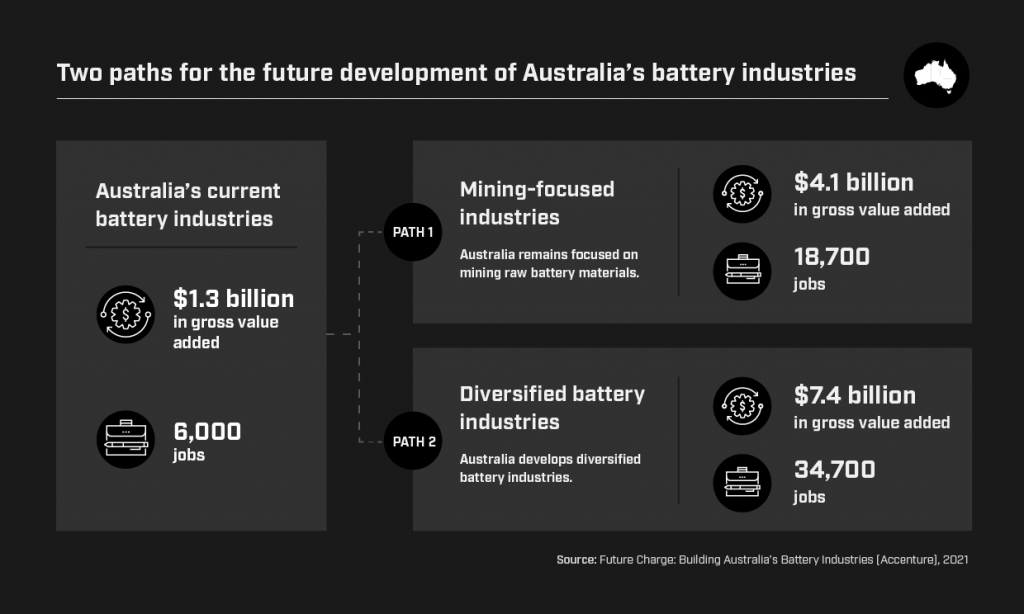
Building a better battery value chain
The report was commissioned by the Future Battery Industries Cooperative Research Centre (FBICRC), a federally funded body dedicated to bringing together industry, government and research partners to create the tools, technologies and skills required to grow battery storage in Australia.
Formed in 2019, the FBICRC already has strong ties to Queensland, with two major projects based at QUT – Electrochemical Testing of Li-ion Battery Materials in Standard Cell Formats, led by Associate Professor Maggie Gulbinska, and the National Battery Testing Centre, led by Dr Joshua Watts.
“The FBICRC is creating and connecting the battery value chain in Australia, from mining and manufacturing to final use,” Dr Watts says. “The end goal is for Australian manufacturers to use Australian resources to make batteries in Australia.
“The National Battery Testing Centre is battery-agnostic – we’re creating the infrastructure required to test, certify and optimise all of the new battery types that are going to be made in Australia, and coming into Australia from overseas, as demand for batteries increases over the next decade.”

In Queensland, much of this demand is expected to be driven by the prevalence of solar power. The Queensland Government has set a goal of 50 per cent renewable energy generation capacity by 2030, and Queensland was Australia’s leading large-scale solar state in 2020, generating 3.3 gigawatt hours (GWh) of solar power.
Queensland is also increasing its rooftop solar capacity at a record rate, with solar panels now on nearly one in every three stand-alone houses. (Nationwide, according to the Clean Energy Regulator, rooftop solar capacity has been growing by an average of 39 per cent each year since 2017.) Queensland energy minister Mick de Brenni recently noted that Queenslanders have “more rooftops, per capita, with solar installations than anywhere else”.
Solar, like wind, is a variable renewable energy source – it can’t be stockpiled like coal, and can’t be accessed when the sun isn’t shining unless it’s stored in a battery. That’s why the Queensland Government recently announced plans to install five grid-scale batteries, with a combined capacity of 40 megawatt hours (MWh), in regions throughout the state, and why battery storage systems for household use are becoming more common.
But it’s not just an abundance of sunshine that’s driving the development of Queensland’s battery industries. Dr Watts points to Queensland’s reputation for excellence in research as another key factor.
“QUT put in a competitive bid for the FBICRC grant for the National Battery Testing Centre,” he says. “One of the reasons we were successful is that we’ve been in the battery research space for over a decade – we’ve been doing this for a long time, and we’ve been building the capability gradually. We have the know-how and the infrastructure to make things happen.”
Expanding the industry
The National Battery Testing Centre works with a number of Queensland-based industry participants, including RedEarth Energy Storage, who are engineering and assembling safe and affordable lithium-ion battery storage systems in Darra for residential solar and off-grid applications, and Feline, who manufacture high-performance lithium-ion batteries for niche applications on the Gold Coast.
They’re also working with Multicom Resources, a core FBICRC participant, to test a vanadium flow battery – the first of its kind in Australia – made using a mineral found in North Queensland. Multicom’s subsidiary, Freedom Energy, is currently undertaking a feasibility study to construct a pilot facility capable of producing 200 vanadium flow batteries a year prior to scaling up production.

And that’s just the tip of the iceberg, when it comes to the businesses who are working to expand Queensland’s role in the battery value chain. Graphene Manufacturing Group (GMG), an FBICRC associate participant based in Sumner Park, recently reached an agreement with UQ’s Australian Institute for Bioengineering and Nanotechnology to build innovative graphene aluminium ion batteries that could have a transformative effect on any number of industries.
The UQ technology, already patented and licensed by the university’s commercialisation company, UniQuest, pairs aluminium ion batteries with graphene electrodes. GMG CEO Craig Nicol says testing has shown the graphene aluminium ion batteries last up to three times as long as the current leading lithium-ion batteries, and charge up to 70 times faster because of their higher power density.
“Our battery will charge your phone in less than a minute,” Nicol says. “When you have something that charges that quickly, it can fundamentally change your relationship with that device.
“This level of power density enables an enormous amount of power very quickly. It’s going to enable new technologies that lithium-ion batteries have had trouble with, and there will be flow-on effects from that – we could see these batteries in everything from watches and phones to grid storage, drones and air taxis.”
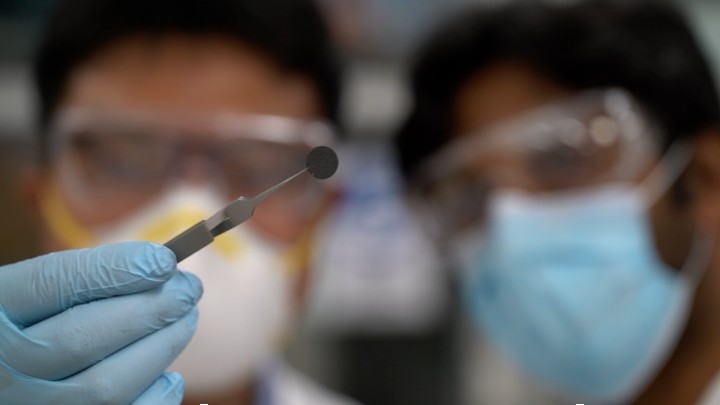
Nicol points to Queensland’s exceptional research facilities and homegrown talent as a reason why the state is well-placed to be at the forefront of battery technology.
“We have world-leading nanochemists here in Queensland, and what they can do is very, very impressive,” he says. “We’ve given our graphene to various universities here to work with, and every one of them has come up with an innovative application for it. For instance, we’re working with QUT to build a graphene-based supercapacitor that will be charged by people moving their bodies – that person’s own kinetic energy will then charge their cochlear implant, or their pacemaker. And that’s all local technology that’s being developed here.”
Anthony Prior, co-founder and CEO of Prohelion – a Brisbane business that designs and manufactures high-powered, lightweight battery management systems, spun off from the TeamArrow solar car racing team – also points to Queensland’s universities as a reason why the state is in pole position.
“We have excellent universities that offer very good electrical engineering courses, and UQ and QUT have both supported TeamArrow,” Prior says. “There’s a close cohort of people in Brisbane who work well together and bounce ideas off each other. It’s a great ecosystem of people and companies who are helping each other out.”

Prohelion, headquartered in Spring Hill with workshops in Yeronga and Hamilton, recently announced a partnership with charging manufacturer Tritium, who also emerged from Queensland’s solar car racing community. Prohelion will build upon Tritium’s IP to manufacture battery management systems, bespoke batteries for EVs, and motor controllers.
Though intended for high-performance vehicles, Prior expects these technologies to eventually become commonplace.
“You start at the high end, and the lessons you learn from that eventually filter down into day-to-day applications,” he says. “The ABS brakes and aerodynamics from Formula 1 cars eventually filtered down into conventional vehicles that people drive every day. The things we’re developing now will become commonplace in the near future.
“We want to grow Prohelion to be a large-scale supplier of batteries and battery management systems. The battery industry is where it’s at, because everything with a petrol engine will have an electric engine in it very shortly, and that’s not just cars. That’s planes, drones, autonomous vehicles of all sorts – everything. The future is huge, and Queensland has to be part of it.”
The sustainability issue
While businesses around Queensland and the rest of the world invest in advancing battery technology, Vaulta is looking ahead to what will happen to those batteries in the future.
Only 2% of lithium-ion batteries are recycled, with the other 98% eventually ending up in landfill. Vaulta R&D engineer Jerome Douven says this means that, in a bid to go green, we’re actually creating another environmental problem down the line.
“We’re doing the right thing by moving towards renewable energy sources and pairing them with batteries,” he says, “but we’re creating another problem if we don’t have a solution to recycle those batteries when they reach the end of their life 10 years from now. And as the demand for batteries increases, and the number of applications for batteries continues to grow, the problem is going to become exponential.
“We think what’s been overlooked is the battery casing. At the moment, battery cases use the welding of battery cells, so they’re not designed for disassembly. You actually need to physically break the welds to take them apart. That does permanent deformation to the battery cells, and it makes disassembling them so cost-prohibitive that it’s just not economically viable.”
Vaulta’s lightweight battery cases, which reduce battery size by about 18%, have fewer components, no metal elements and no welds, so cells can be easily reused and recycled.
“When the battery has finished its first life, in the first application it was designed for, then the battery can be disassembled, the cells can come out of the case, and they can go onto a secondary application that demands less power,” Douven says.
“That same case can then be re-used with newer battery cells for the same application. Even if a newer, better and faster battery cell has come along in the meantime, it can go into that same case, because it’s easy to reconfigure.”
Vaulta recently announced an agreement to use its battery cases with Braille Energy Systems, an American manufacturer of ultra-lightweight batteries for Nascar, IndyCar and the Australian Supercars. Vaulta has also signed an agreement with Quickstep, the nation’s largest independent aerospace advanced composites manufacturer, to develop smarter technology for renewables, manned and unmanned drones and electric flight.
What’s next?
The Accenture report recommends a set of six actions that are required from government and industry to make the most of the opportunities presented by batteries.

Prohelion’s Anthony Prior says further government funding for research and development will be essential.
“We’re growing quite well organically, but R&D grants are fantastic boosts to push the state of the art along,” he says.
“It would be great to see the Government continue to support the roll-out of fast chargers across Australia, or at least across Queensland, to encourage the uptake of EVs here. And while the Queensland Government is supporting the industry well, continued support for entrepreneurs and small companies through grants and other assistance will help them along.”
For GMG’s Craig Nicol, the development of a solid framework will be vital to the continued diversification of Queensland’s battery industries.
“There are a lot of people doing great work, but industry development doesn’t exist without a government framework,” he says. “If you look around the world, industry development always happens inside a framework. The Made In Queensland grant is a great step towards a Queensland Government framework, and the next stage that I’d hope they’re looking at is around the local content requirements for battery cells and battery packs.
“Local content requirements for cell and pack manufacturing would help to create local battery manufacturers that are able to build to Australia’s battery requirements. You know, battery manufacturing is basically the new refining – everybody wanted to have an oil refinery 100 years ago, but now everyone wants a battery manufacturing centre in their plant.
“If we want to create our own new refineries of the future, we need to create a demand through some kind of framework that facilitates better, locally made batteries for our local conditions, which are quite extreme. That’s where I think incentivisation for local content would help.”
Dr Joshua Watts agrees that the Made In Queensland grant is a step in the right direction, and points to the Modern Manufacturing Initiative – and the funding for the FBICRC – as strong indications of support from the Federal Government. But he stresses that more is needed, and time is of the essence to stake our claim to a bigger role in the battery value chain.
“We’re getting to a tipping point where if we don’t act, and we don’t get the right subsidies in place to support manufacturing and adding value to raw battery materials in Australia, we’re going to miss out,” he says.
“It can take years for these things to come online, so we need to start the process now.”
